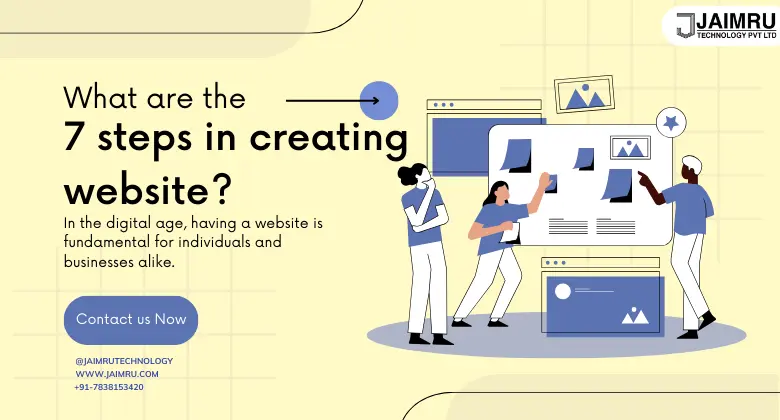
Posted On : 28-02-2024 10:50:00
In the digital age, having a website is fundamental for individuals and businesses alike. Whether you're an entrepreneur looking to establish an online presence or an enthusiast wanting to share your passion with the world, the process of creating a website can seem daunting. However, breaking it down into manageable steps can simplify the journey. Here are seven crucial steps to guide you through the process of creating a website.
1. Define Your Purpose and Goals:
Before diving into the technical aspects of website creation, it's essential to define the purpose and goals of your website. Ask yourself: What do you want to achieve with your website? Are you selling products, providing information, or showcasing your portfolio? Clearly outlining your objectives will guide the entire process and help you make informed decisions at each stage.
2. Choose a Domain Name and Register It:
Your domain name is the online address that users will use to access your website. It should be unique, easy to remember, and relevant to your content or brand. Once you've selected a domain name, you need to register it through a domain registrar. Popular domain registrars include GoDaddy, Namecheap, and Google Domains. Keep in mind that your domain name is an integral part of your brand identity, so choose wisely.
3. Select a Reliable Web Hosting Provider:
Web hosting is a service that allows your website to be accessible on the internet. Choosing a reliable hosting provider is crucial for ensuring your website's performance and security. Consider factors such as server uptime, customer support, and the hosting plan that suits your needs. Shared hosting is a cost-effective option for beginners, while more extensive websites might benefit from dedicated hosting. Some popular hosting providers include Bluehost, SiteGround, and HostGator.
4. Choose the Right Platform and Content Management System (CMS):
The choice of the platform and Content Management System (CMS) plays a significant role in website development. Platforms like WordPress, Wix, and Squarespace provide user-friendly interfaces for building websites without extensive coding knowledge. WordPress, in particular, is highly customizable and powers a significant portion of websites on the internet. Select a platform that aligns with your technical skills, customization requirements, and future scalability.
5. Design Your Website:
Website Design is crucial for attracting and retaining visitors. Begin by selecting a suitable theme or template that aligns with your brand and content. Most platforms offer a variety of pre-designed templates that you can customize to fit your needs. Pay attention to the layout, color scheme, and overall aesthetics. Ensure that your design is mobile-responsive to cater to users accessing your site on various devices.
6. Create and Organize Content:
Content is the heart of your website. Develop high-quality, engaging content that aligns with your goals and resonates with your target audience. Organize your content logically, creating easy navigation for visitors. Consider the inclusion of essential pages such as Home, About Us, Contact, and any specific pages related to your content or services. Use multimedia elements like images and videos strategically to enhance the user experience.
7. Optimize for SEO and Launch:
Search Engine Optimization (SEO) is crucial for improving your website's visibility on search engines like Google. Optimize your content by incorporating relevant keywords, creating descriptive meta tags, and ensuring a clean URL structure. Additionally, submit your website's sitemap to search engines to facilitate crawling and indexing. Once your website is optimized, it's time to launch it and make it accessible to the public.
Creating a website involves a series of well-defined steps, each playing a crucial role in the overall success of your online presence. By clearly defining your goals, choosing the right domain, hosting provider, platform, and CMS, designing an appealing website, creating compelling content, and optimizing for search engines, you can navigate the process with confidence. Remember that building a website is an ongoing process, and regular updates and improvements are necessary to keep up with changing trends and meet the evolving needs of your audience. With these seven steps as your guide, you can embark on your website creation journey and bring your online vision to life.
Copyright 20-2025 Jaimru Technology Private Limited | All Rights Reserved.